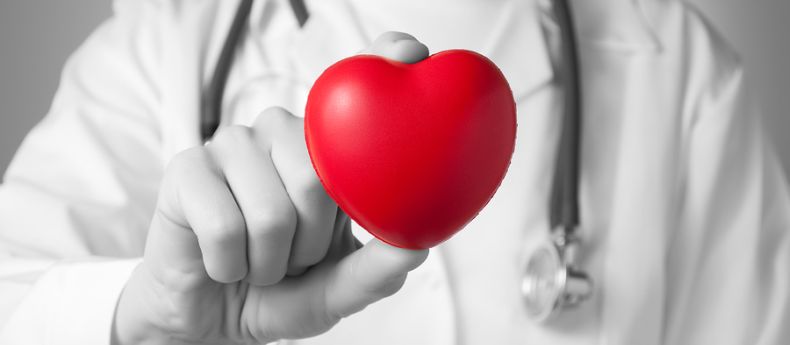
Cardiac Rehabilitation Demystified in a Heartbeat
Heart disease is one of the most feared diseases worldwide—if not discovered and treated early, a few seconds could turn a dormant condition into a dangerous killer. Thanks to ever-evolving techniques for managing cardiovascular conditions, heart disease treatment could actually be relatively simple. However, despite the availability of a wide range of interventional and surgical treatments, many patients fall back into their unhealthy habits after leaving the hospital, causing them to suffer repeat heart problems and return trips to the hospital. Then there are other patients who, fearing further heart damage, resign from work and completely avoid exercise because they are afraid to do more than “rest at home”. In reality, a successful operation doesn’t signal the end of treatment—treatment for cardiovascular disease is not complete without cardiac rehabilitation.
What is cardiac rehabilitation?
Cardiac rehabilitation is a carefully designed health maintenance and education program for you and your heart. It’s designed to help patients who have suffered mental and physical trauma to regain a high quality of life, their ability to work, and their participation in their chosen life activities. About 90% of developed countries have national cardiac rehabilitation guidelines (many are based on European or American models). However, China is still exploring the integration of cardiac rehabilitation into its healthcare system. Cardiac rehabilitation has been shown to confer a 20% decrease in mortality rate to patients who undergo rehabilitation compared to patients who do not. Furthermore, cardiac rehabilitation has been shown to decrease overall cardiovascular mortality rates by 30% as well as rates of re-admission to hospitals.
Who should undergo cardiac rehabilitation?
For patient who have experienced one or more of the following within the past year,I would recommend cardiac rehabilitation:
- Cardiac arrest
- Coronary heart disease
- Coronary interventional treatment
- Angioplasty or coronary bypass procedures
- Chronic heart failure or peripheralarterial disease
What happens in cardiac rehabilitation?
Though each rehabilitation process is tailored specifically to each patient, cardiac rehabilitation can be divided into four general stages:
Inpatient phase: During this period, the rehabilitation team will help the patient develop a ”rehab regimen” to help the patient recover functional capabilities. The patient will begin with simple activities, such as sitting up in bed, working all joints, and maintenance of personal hygiene. Gradually, the patient will be encouraged to walk around the room, down the hallway, and up a few stairs if s/he is able.
Early recovery phase: The Rehab Team will recommend exercises and activities for the patient to try. From the second to twelfth weeks after discharge, patients will be closely monitored as they gradually increase their physical activity, starting with light exercises such as walking and lifting light weights. In addition to exercise, the Rehab Team will also educate patients on maintaining a healthy lifestyle, including the establishment of a healthy dietary, emotional and lifestyle habits.
Late recovery phase: Starting about six to 12 weeks after discharge and lasting from three to six months, the Rehab Team will encourage and guide patients to exercise and achieve a healthy weight. The appropriate intensity of the exercise will depend on the patient’s target heart rate (Active Heart Rate is roughly 170 or 180 minus the patient’s age). Exercise should last about 30 minutes to one hour and should be engaged in three to four times per week. The Rehab Team will continue to provide guidance on nutrition, lifestyle choices and weight management.
Life-long health “phase”: After the first three rehabilitation phases, the patient should now have established a healthy diet and lifestyle and no longer needs to exercise under medical supervision. In this phase, the patient’s goal is to maintain those healthy habits and to check in regularly with his/her Rehab Team.
Cardio exercise for cardiac rehab
Aerobic exercise is internationally recognized as the #1 option for coronary heart disease rehabilitation. Specifically, aerobic exercise relies on glycogen, fat, and aerobic metabolism to supply energy to the body. For the purposes of rehabilitation, there are two types of aerobic exercise:
Isotonic aerobic exercises mainly include walking, jogging, cycling, swimming, going up and down stairs, boating, and participating in sports. During these types of exercise, heart rate increases, blood flow accelerates, and heart muscles (and lung muscles) become generally stronger. In this case, each patient’s stroke volume and cardiac output were increased. Isotonic exercises improve the patient’s resting heart rate, blood flow to all parts of the body, and overall heart function.
Isometric aerobic exercises involve exercising with weights. The combination of appropriate weights and activities should put just the right amount of strain on the cardiovascular system and encourages the whole system to become stronger. [Note: During these exercises, blood pressure will naturally and significantly increase, which could affect blood flow back to the heart and lungs. Patients should consult a cardiac rehabilitation professional before exercising with weights.]
Cardiac rehabilitation will never truly be finished. In order to provide comprehensive, long-term healthcare services, we at United Family Healthcare offer patients the services of a multidisciplinary rehabilitation team that includes doctors, nurses, physical therapists, sports rehabilitation specialists, pharmacists, and other community partners. We hope to partner with cardiac rehabilitation patients to minimize the effects of cardiovascular disease on the body and mind to efficiently and effectively restore their quality of life.
Copyright United Family Healthcare 2014 All right reserved - 京卫网审[2014]第1927号 - 京ICP备13017554号-4
深圳新风和睦家医院 广审号:粤(B)广[2024]第09-10-1049号

